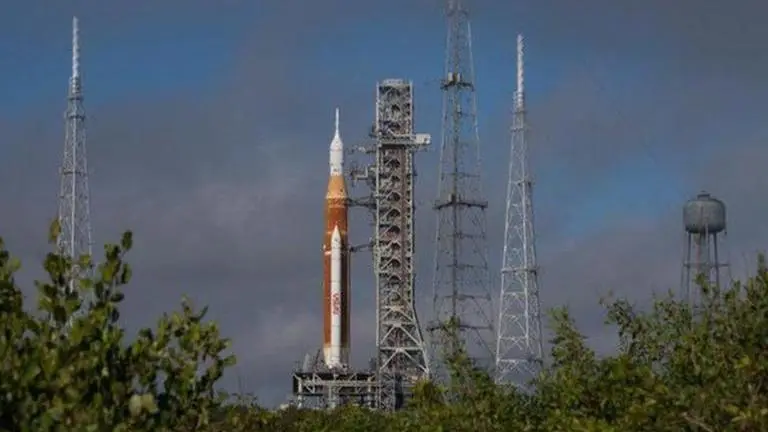Updated 4 April 2022 at 16:04 IST
NASA's launch pad for Artemis I SLS rocket struck by lightning during tests; WATCH
NASA postponed the “wet dress rehearsals” of its Space Launch System (SLS) rocket after four lightning strikes at the Launch Pad 39B of Kennedy Space Center.
- Science News
- 2 min read

In a key development, NASA postponed the “wet dress rehearsals” of its Space Launch System (SLS) rocket after four lightning strikes were confirmed to the lightning towers around Launch Pad 39B on April 3. While the first three were found to be low-intensity strikes, the fourth one was the strongest one recorded ever since NASA installed the new lightning protection system. The Launch Pad 39B at the Kennedy Space Center is where NASA is conducting a three-day fueling test or the "wet dress rehearsal" to prepare for Artemis 1 moon mission targeted for later this year. The rehearsal was scheduled from April 1-3 which got pushed to April 4 owing to the unforeseen incident.
We're targeting Monday, April 4, to resume the @NASAArtemis I wet dress rehearsal. The launch control team will meet at 6am ET (10:00 UTC) before deciding if they will proceed with propellant loading.
— NASA (@NASA) April 3, 2022
Follow @NASAGroundSys and https://t.co/dMVnvEQcfC for updates. pic.twitter.com/CUWvGYG3kZ
In a series of tweets, NASA's Exploration Ground Systems informed that the strongest lightning struck the catenary wire that runs between the 3 towers at the launch pad. However, the lightning protection system worked well and the SLS rocket, as well as the Orion spacecraft, are in good health and would not hamper the tests. "Each tower is topped with a fiberglass mast and a series of catenary wires and down conductors designed to divert lightning away from the rocket and service structure. This configuration helps keep the rocket isolated from dangerous currents," the agency added.
(2/4) Each tower is topped with a fiberglass mast and a series of catenary wires and down conductors designed to divert lightning away from the rocket and service structure. This configuration helps keep the rocket isolated from dangerous currents.
— NASA's Exploration Ground Systems (@NASAGroundSys) April 3, 2022
Following the incident, NASA informed that the rehearsal requiring propellant loading in the rocket will be resumed at approximately 4:30 pm today.
Why the SLS rocket "wet dress rehearsal"?
It is pertinent to note that NASA engineers are conducting the "wet dress rehearsal" to prepare the rocket for Artemis 1 launch. The engineers would load the SLS rocket's tanks with propellants and its engines would be fired to conduct a full launch countdown. Under the test run that would last for two days, NASA would also demonstrate the ability to recycle the countdown clock while draining the tanks and allow the engineers to practice the timelines and procedures used on launch day.
Advertisement
According to the agency, around 7,00,000 gallons of cryogenic, or super cold, propellants, including liquid hydrogen and liquid oxygen will be filled inside the tanks. In addition to this, the mission teams will start the critical tests by activating the facilities needed for launch and ahead of beginning the countdown sequence and the test fire.
Image: Twitter/@NASAArtemis
Published By : Harsh Vardhan
Published On: 4 April 2022 at 16:04 IST
